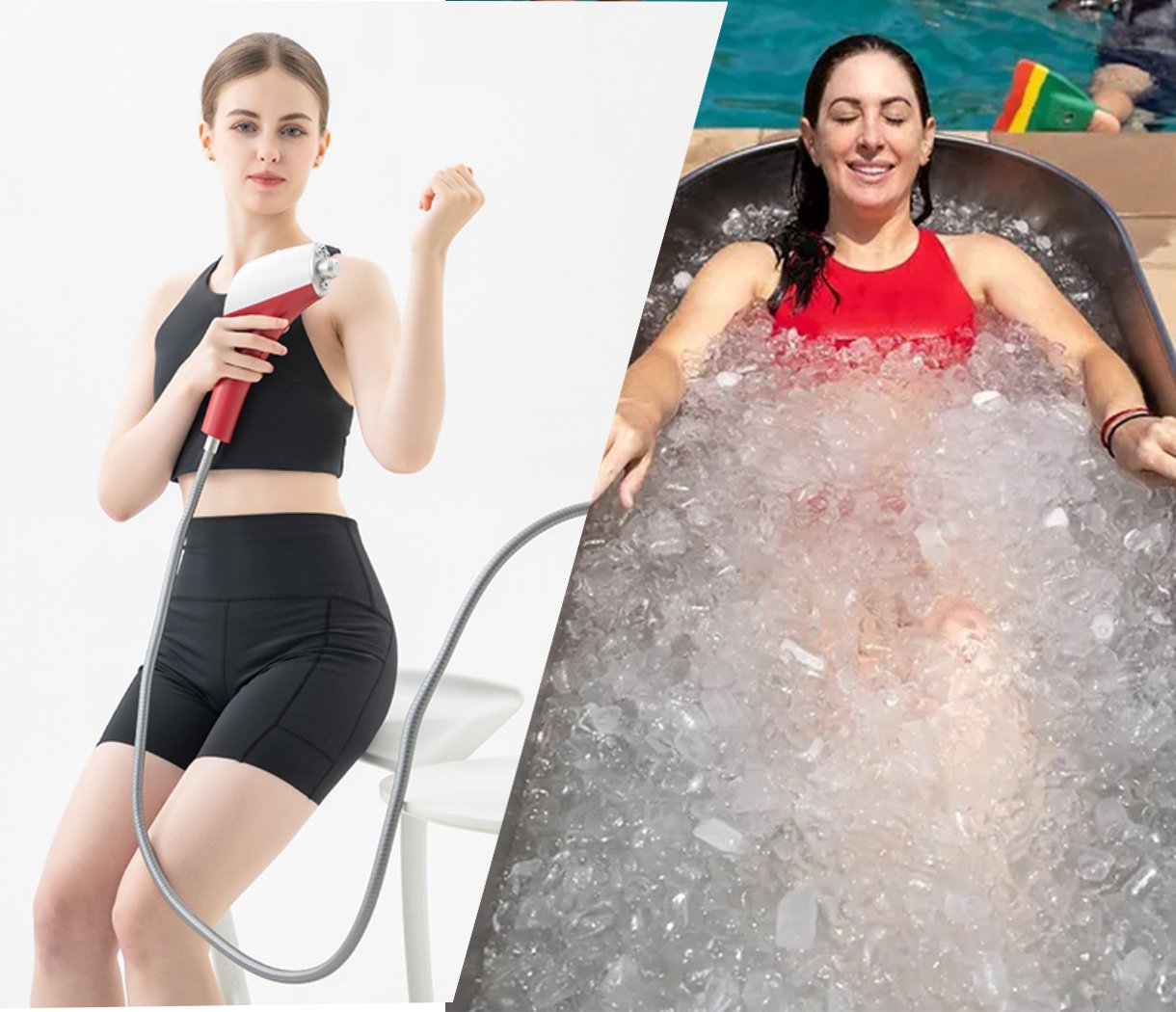Introduction: The Ultimate Cold Showdown
Cold therapy has earned its place as a go-to method for recovery and wellness. From reducing muscle soreness to improving circulation, it’s been used for centuries. Recently, two popular treatments have dominated the cold therapy scene: CO2 cryotherapy and the cold plunge. While both promise similar benefits—such as pain relief, faster recovery, and improved mental clarity—they achieve these results in very different ways. In this ultimate cold showdown, we’ll explore how each therapy works, their effectiveness, risks, and what might be the best fit for your needs.
Mechanism of Action: How Each Treatment Works
CO2 Cryotherapy
CO2 cryotherapy uses pressurized carbon dioxide (CO2) gas to cool the body quickly, often to extreme sub-zero temperatures (-78.5°C or -109.3°F). The therapy is typically delivered in a controlled chamber or localized spot, where CO2 gas rapidly cools the skin, triggering a vasoconstriction (blood vessels shrink) followed by vasodilation (blood vessels expand) once the session is over. This fluctuation in blood flow helps to increase circulation, reduce inflammation, and accelerate muscle recovery. It’s highly effective for targeted relief—making it ideal for pain management and healing muscle injuries. The treatment lasts just a few minutes but is intense and provides quick results.
Cold Plunge
The cold plunge, or ice bath, immerses the body in a tub of ice-cold water (40-50°F or 4-10°C). The body reacts by undergoing vasoconstriction, reducing blood flow to muscles and tissues. Once the body is removed from the water, blood rushes back to the muscles with more oxygen and nutrients, helping them heal. This natural physiological response is helpful for reducing muscle soreness, promoting recovery, and boosting circulation. The experience can be more intense as the body is fully immersed in the cold, offering a full-body recovery treatment.
Which One Delivers Better Results?
CO2 Cryotherapy
CO2 cryotherapy offers targeted treatment, meaning it’s ideal for those who need focused recovery for specific body parts, such as joints or muscle strains. It’s great for reducing localized inflammation and speeding up recovery for injuries or chronic pain. Many users report faster recovery times and significant relief from pain and inflammation after just a few sessions. For athletes, fitness enthusiasts, or anyone experiencing muscle pain, CO2 cryotherapy can offer a quick solution with minimal discomfort.
Cold Plunge
The cold plunge offers a full-body experience. It’s especially effective after intense physical exertion like workouts or long races, as it targets muscle fatigue, inflammation, and general soreness. The cold exposure is more extreme, which is why it appeals to those looking for a challenge or a more intense recovery method. While cold plunges are excellent for general recovery, they may not be as effective for targeted pain relief compared to CO2 cryotherapy.
Limitations and Risks: What Are the Drawbacks?
CO2 Cryotherapy
CO2 cryotherapy is generally considered safe, but it requires professional supervision to avoid respiratory risks. Prolonged exposure to high CO2 concentrations can cause breathing difficulties. For individuals with respiratory issues or certain heart conditions, this treatment might not be suitable. Additionally, although it’s effective for localized relief, the treatment requires specialized equipment and can be costly, limiting access for some individuals.
Cold Plunge
The cold plunge presents a higher risk of hypothermia if the exposure is prolonged beyond recommended times (usually 10 minutes or less). The initial shock of the cold water can be difficult for beginners and people with certain health conditions, like heart problems, as it can increase heart rate and blood pressure. Plus, it’s important to gradually rewarm the body after the plunge to avoid cardiovascular stress.
Cost and Convenience
CO2 Cryotherapy
CO2 cryotherapy sessions are typically more expensive, ranging from $40 to $100 per session. Additionally, it requires access to specialized cryotherapy centers or equipment, which may not be available everywhere. However, because the session is short (lasting around 3-5 minutes), it’s a quick and effective option for those who want a fast recovery without committing to a long session.
Cold Plunge
The cold plunge is usually more affordable, with costs primarily associated with access to cold plunge tubs at gyms or wellness centers. Setting up a DIY ice bath at home is also an option, making it an economical choice. Cold plunges are also more accessible—you don’t need specialized equipment, just a tub or pool of cold water. However, full-body immersion takes a bit longer (typically 3-10 minutes), so it may not be as convenient for those with limited time.
Final Takeaways: Which Is Best for You?
CO2 cryotherapy is a targeted, effective, and comfortable method for quick recovery and pain relief. It’s best for those looking for local treatment or faster recovery, especially when dealing with sports injuries or muscle pain. However, it requires specialized equipment and supervision, making it a more costly option for some.
Cold plunge is ideal for those seeking a full-body recovery solution. It’s budget-friendly, accessible, and great for general muscle soreness, fatigue, and mental resilience. However, it can be intense, especially for beginners, and has safety risks if not done correctly.
Ultimately, your choice depends on your personal preferences, recovery goals, and health status. Both therapies are incredibly beneficial, but whether you choose CO2 cryotherapy or the cold plunge, you’re sure to feel the benefits of these cool recovery methods!



